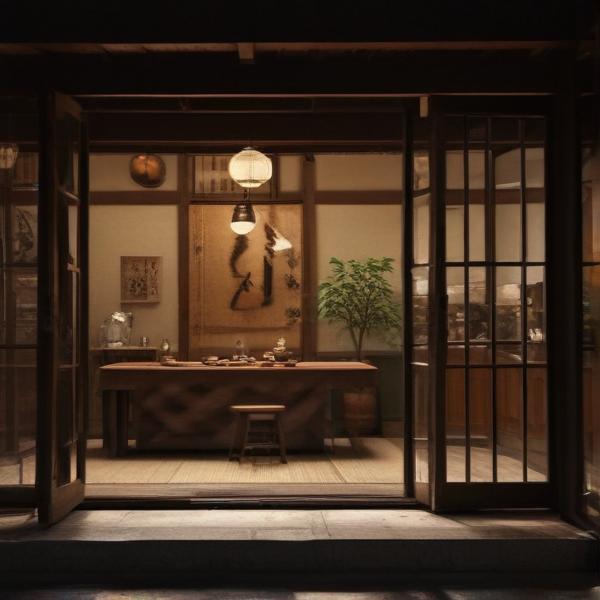基本信息 (Basic Information)
含义与用法 (Meanings & Usage)
中文核心释义 (Core Chinese Meaning): 洞、孔、窟的意思,指地面或物体表面的洞穴或房屋等。
英文核心释义 (Core English Meaning): cave, hole, cavity; a hollow space in the ground, or a dwelling.
象形意义 / 为何这么写 (Pictographic Meaning / Writing Rationale)
文言文释义 (Classical Chinese Meaning)
与现代意义相近,多指洞穴、藏身之所。Similar to modern meaning; generally refers to a cave or a hiding place.
深入学习 (In-depth Study)
字源故事 (Origin Story)
字形演变 (Character Evolution)
常用词语和例句 (Common Words & Examples)
洞穴 (cave)
他们在山中发现了一个巨大的洞穴。
Eng: They discovered a huge cave in the mountains.
鼻穴 (nostril)
医生检查了他的鼻穴。
Eng: The doctor examined his nostril.
穴位 (acupuncture point)
针灸师在手腕的穴位扎针。
Eng: The acupuncturist placed a needle at an acupuncture point on the wrist.
相关成语 (Related Idioms)
相关成语信息待补充。Related idiom information pending.
多语言翻译 (核心释义) (Translations (Core Meaning))
- French: caverne, trou, cavité
- German: Höhle, Loch, Hohlraum
- Spanish: cueva, agujero, cavidad
- Italian: grotta, buco, cavità
- Portuguese: caverna, buraco, cavidade
- Russian: пещера, дыра, полость
- Arabic: كهف، حفرة، تجويف
- Persian: غار، سوراخ، حفره
- Dutch: grot, gat, holte
- Polish: jaskinia, dziura, jama
- Vietnamese: hang động, lỗ, khoang
- Ukrainian: печера, отвір, порожнина
视频学习资源 (Video Learning Resources)
通过以下链接在热门视频网站搜索 "穴" 的更多讲解:
Search for more explanations of "穴" on popular video sites:
- 在 Bilibili.com 搜索 "穴 字源 说文解字" (Search on Bilibili)
- 在 YouTube.com 搜索 "穴 character origin etymology" (Search on YouTube)
网络参考 (Web References for "穴") ()
网络内容摘要 (Web Content Summary):
“穴”是一个象形字,本义指挖在地里的洞穴或土室,古时常用作人类或动物居住的地方。 “穴” is a pictographic character that originally means a cave or an underground chamber dug into the earth, used by humans or animals as a dwelling.
- 汉字“穴”的象形起源可以追溯到金文,字形像小土丘下有两个洞口,表现出“洞穴”的含义。其主体部分后来写作“宀”(像屋顶),在楷书中“穴”下方的“八”形笔画象征洞口,用来与类似字区分。 The pictographic origin of “穴” comes from Bronze Inscriptions (Jinwen): the form depicts a small mound with two openings underneath, symbolizing a cave. The upper part became “宀” (roof-like), and the “八”-shaped strokes at the bottom in regular script represent the cave's openings, helping to distinguish it from similar characters.
- “穴”常见于复合词中,如“洞穴”(cave)、“穴位”(acupoint)、“穴居”(cave dwelling)等,指与洞穴或孔隙相关的事物。 “穴” often appears in compound words such as “洞穴” (cave), “穴位” (acupoint in Chinese medicine), and “穴居” (cave dwelling), all relating to holes or cavities.
- 易混淆点:“穴”下部分为“八”,不要与“儿”混淆。在隶书中曾用“儿”形,现以“八”区分。 A common confusion: The lower part is “八”, not “儿” — while the clerical script (“Lishu”) used “儿”, the regular script uses “八” to distinguish it from similar characters.
- 文化趣闻:《说文解字》中,“穴,土室也”,强调其与居住、藏身等含义的联系。 Cultural note: According to “Shuowen Jiezi”, “穴” refers to an underground chamber, highlighting its connection with dwelling and shelter.
(目前暂无与“穴”直接相关的流传成语。) (Currently, there are no widely used idioms directly featuring “穴”.)
汉字"穴"的起源、演变过程-汉字字源辞典
《战文编》515页 《说文》152页 《马王堆》310页 《隶辨》883页. 象形字。像挖地建造的供居住用的洞穴。此字的主体是" ",像房屋的侧视形。 里面的表示洞穴的笔画,在隶书中写作"儿",但在楷书中写作"八",以使"穴"和" "区别开来。 《说文》:"穴,土室也。
汉字 "穴" 的演变史:从甲骨文到楷体的奇妙之旅 - 知乎
汉字演变过程 . 甲骨文 中虽无 "穴"(xué)字,但有 "宀"(mián)字,形似房屋侧视,本义为房屋,后引申为覆盖。 金文 中的 "穴" 字,如同在小土丘下挖出地洞并留有两个洞口,是在甲骨文 "宀" 基础上多画两个洞口。 小篆 中的 "穴" 字出现变形,呈瘦长形,较难辨认地洞模样。
更多图片 (穴 More Images) ()
